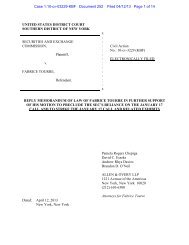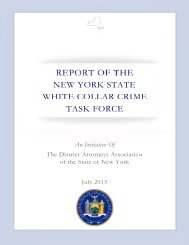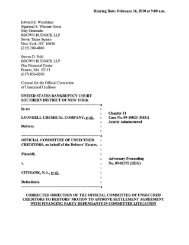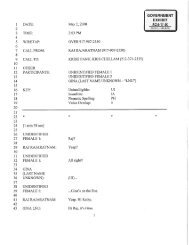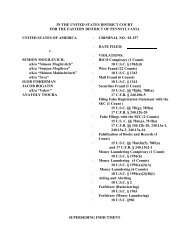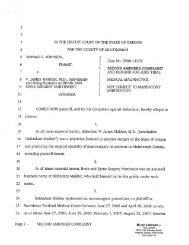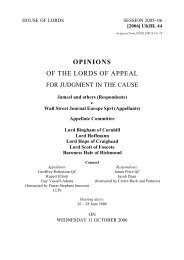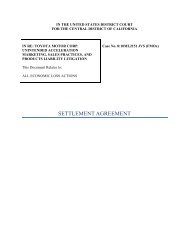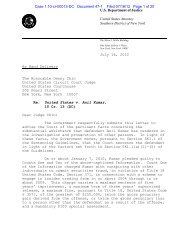Salz Review - Wall Street Journal
Salz Review - Wall Street Journal
Salz Review - Wall Street Journal
Create successful ePaper yourself
Turn your PDF publications into a flip-book with our unique Google optimized e-Paper software.
<strong>Salz</strong> <strong>Review</strong><br />
An Independent <strong>Review</strong> of Barclays’ Business Practices<br />
132<br />
different businesses are inevitably very different. Nonetheless, it is essential that<br />
Barclays’ pay arrangements are designed and evaluated with sufficient regard for how<br />
they align with the Group’s values, what behaviour they incentivise, and how<br />
adjustments can be made not just for bad behaviour but also for losses or costs<br />
incurred in the future. Although we would have hoped to find some common<br />
principles, we could find no evidence – for the period addressed by our review –<br />
of a consistently implemented Group-wide ‘philosophy’ and approach to pay.<br />
11.9 At the heart of any consistent philosophy and approach to pay, we would expect<br />
balance in the way that the burden of risk is shared between employees and<br />
shareholders. We would expect careful consideration of the appropriate sharing in<br />
the fortunes of the entire institution – both in good times and in bad. And we would<br />
expect under-performance not to be rewarded.<br />
11.10 The essence of a bank is to take risk. The first call on earnings should therefore be<br />
to maintain an appropriate capital base to support the risks taken. As the Financial<br />
Stability Board observed, significant financial institutions should ensure that total<br />
variable compensation does not limit their ability to strengthen their capital base. 206<br />
Pay should then reflect risks taken, properly aligning the consequences of risk so<br />
that employees only benefit if shareholders do too. Despite the sophistication of<br />
accounting standards, the complexity of some bank businesses means that the<br />
financial accounts will not be able to reflect all risks at a given point in time.<br />
This makes it difficult to reflect risk fully in compensation decisions.<br />
11.11 The Financial Stability Forum (FSF) observed in 2009 that “as a practical matter,<br />
most financial institutions have viewed compensation systems as being unrelated to<br />
risk management and risk governance”. The FSF illustrates this by pointing out that<br />
“two employees who generate the same short-run profit but take different amounts<br />
of risk on behalf of their firm should not be treated the same by the compensation<br />
system. In general, both quantitative measures and human judgment should play a<br />
role in determining risk adjustments.” 207 Barclays appears to have made limited use<br />
of risk metrics and risk input in key compensation decisions. In our view, risk<br />
considerations should be embedded throughout the compensation system.<br />
Compensation outcomes should be symmetric with risk outcomes to the extent<br />
possible. The FSF observed that some of the “greatest barriers to progress towards<br />
the principle that compensation must be adjusted for risk are:<br />
― Determining and implementing the proper mix of executive judgment and<br />
quantitative risk measures;<br />
― The difficulty of incorporating types of risk for which measurement is at early<br />
stages such as liquidity or reputation risk. The difficulty is not a reason to<br />
ignore such risks;<br />
― The difficulty of safeguarding the fairness of risk adjustments;<br />
206 Financial Stability Board, FSB Principles for Sound Compensation Practices – Implementation Standards, 2009.<br />
207 Financial Stability Forum, FSF Principles for Sound Compensation Practices, 2009;<br />
www.financialstabilityboard.org/publications/r_0904b.pdf.




